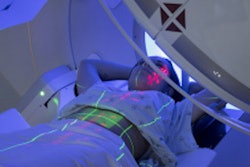
A large French study has shown that teleradiology activity can closely estimate hospitalizations and predict short-term evolution of the COVID-19 pandemic, allowing timely adjustment of restrictive measures and allocation of medical resources.
Furthermore, the authors from Bordeaux and Marseille state that such predictive markers can help confirm tendencies, or create forecast models, and serve to monitor the pandemic in other geographical areas.
The main aim of the article, which was published online by Insights into Imaging on 22 July, was to investigate radiological markers of COVID-19-related emergency activity as global estimators of pandemic evolution in France. The authors looked at two sources of data from March to November 2020 in this prospective multicentric study: an open-source epidemiological dataset collecting daily hospitalizations, intensive care admissions, hospital deaths, and discharges and a teleradiology dataset corresponding to the weekly number of CT scans performed in 65 emergency centers and interpreted remotely.
A total of 100,018 CT scans were included over 36 weeks, with 19,133 (19%) performed within the COVID-19 workflow. Meanwhile, there were 227,677 hospitalizations. Teleradiological and epidemiological time series were almost perfectly superimposed. The maximal number of COVID-19 CT scans was reached the week of 23 March 2020 (1 086 CT scans), one week before the highest hospitalizations (23,542 patients).
The team noted that the nationwide study showed that real-time prospective and structured radiological data can provide relevant real-time predictive markers of the evolution of COVID-19 pandemic on a national scale. Results gathered since the beginning of the outbreak in France highlighted the strong correlations between the number of hospitalizations per week and the number of CT-scans related to COVID-19 performed in partner hospitals, especially in the two preceding weeks.
The authors stated that these complementary early predictive markers could be used by public health agencies to instantly confirm tendencies or outbreak resurgence or even as new predictors in forecasting models. Furthermore, the findings could translate to smaller geographical levels and help monitor the pandemic over mainland territories.
"Our findings illustrate the potential value of integrating radiological data to support public health management and stress the need for collaborative nationwide and international radiological networks and platforms," the researchers stated.



















